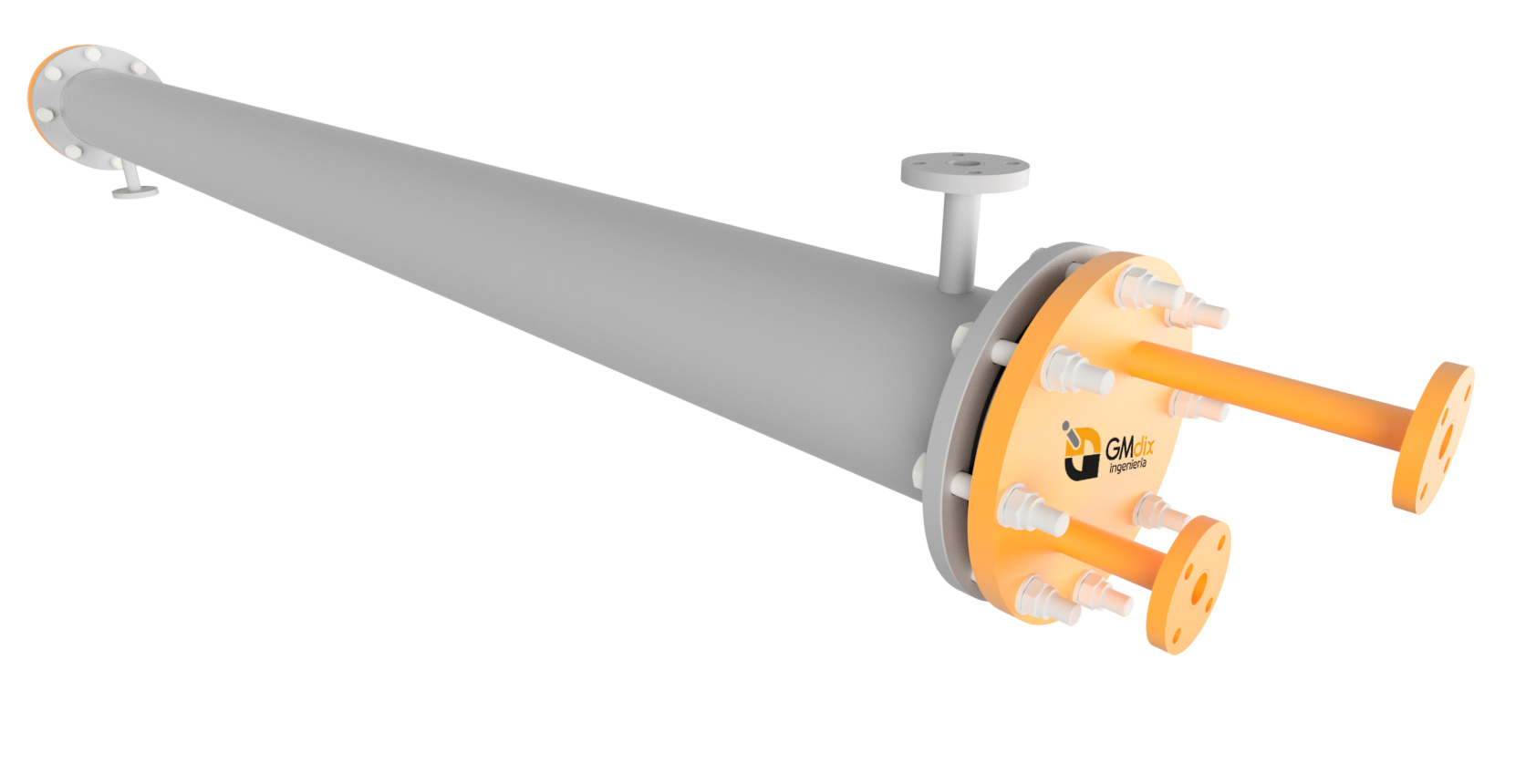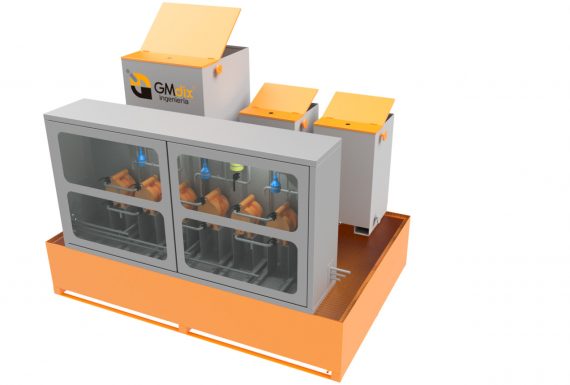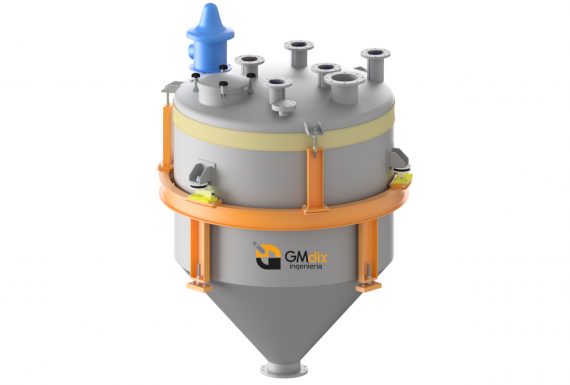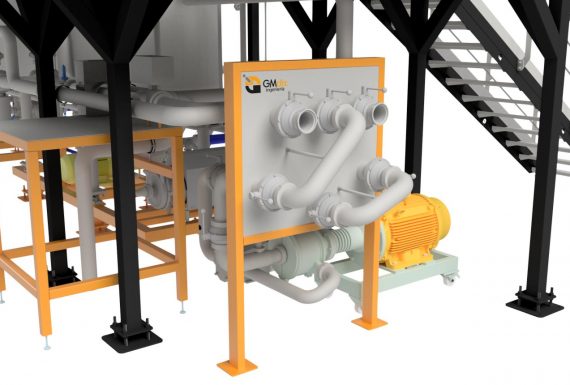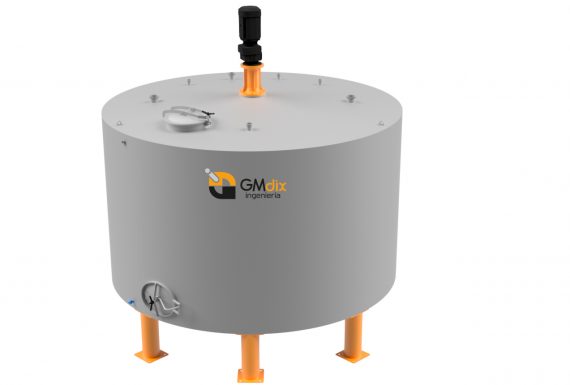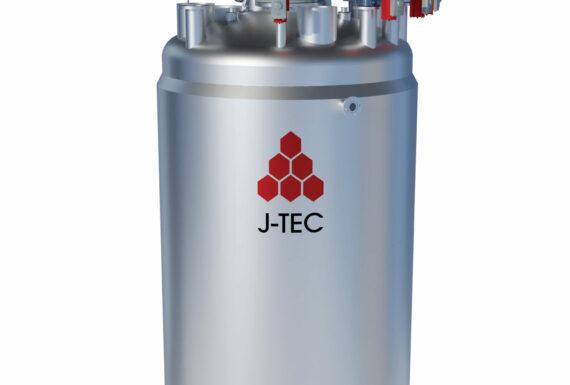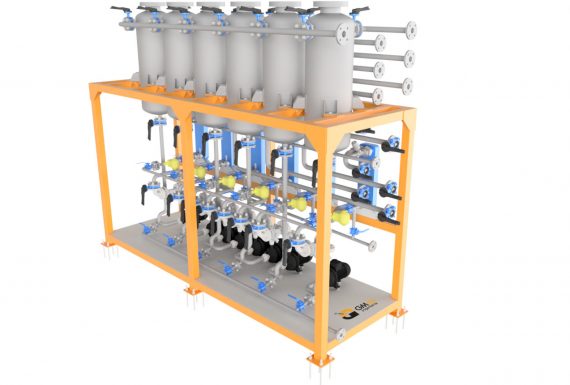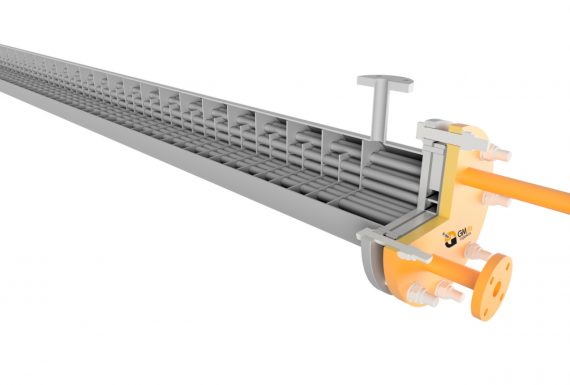Application of tubular exchanger
These are used to cool or heat a fluid that passes through the exchanger by means of a flow of hot or cold steam or water. Thus, the recommended use of this equipment is to control the temperature of a product.
A tubular exchanger is a system used to transfer heat or cold between two or more fluids. The fluids may be separated by a solid wall to prevent mixing or they may be in direct contact.
Tubular exchanger operation
Funciona mediante un cuerpo tubular al que se insertan multitud de tuberías internas para crear dos cámaras por donde circulan los fluidos a diferentes temperaturas, en ellas se produce el enfriamiento o calentamiento por contacto entre superficies.
It operates by means of a tubular body to which multiple internal pipes are inserted to create two chambers through which fluids circulate at different temperatures. Cooling or heating is produced by contact between the surfaces.
Housing and pipe heat exchangers are typically used for high pressure applications (pressures above 30 bar and temperatures above 260°C).
Technical characteristics of tubular exchanger
There are different tubular exchangers. The format may be adjusted to desired flow rates through its dimensioning to achieve the desired capacity, but the required thermal characteristics must be taken into account in each case.
-
Cleaning: Keep in mind that a small pipe diameter makes the exchanger economical and compact, but it is likely to foul quicker, and the small size makes mechanical cleaning difficult. In conclusion, to determine the diameter of the pipe, the available space, cost, and fouling nature of the fluids must be taken into account.
-
Pipe thickness: Pipe wall thickness is usually determined to ensure that there is sufficient space for corrosion, that flow-induced vibration has resistance, axial force, availability of spare parts, resistance of the ring (to withstand the internal pressure of the pipe), and resistance to buckling (to withstand overpressure in the housing).
-
Pipe length: heat exchangers are usually less expensive when they have a smaller housing diameter and a long tube length. Therefore, the objective is usually to make the heat exchanger as long as physically possible without exceeding production capacities. However, there are many limitations to this including the space available on the installation site and the need to ensure that pipes are available in twice the required length (so they can be removed and replaced). Also, long, thin pipes are difficult to remove and replace.
-
Pipe spacing: when designing pipes, it is common practice to ensure that the pipe spacing (i.e., the distance between centres of adjacent pipes) is no less than 1.25 times the outside diameter of the pipes. Wider pipe spacing leads to a larger overall housing diameter, which leads to a more expensive heat exchanger.
-
Corrugated pipe: this type of pipe, used mainly for air chambers, increases the turbulence of fluids, which significantly affects heat transfer, resulting in better performance.
-
Pipe layout: refers to how pipes are positioned within the housing. There are four main types of pipe design, namely triangular (30°), rotated triangle (60°), square (90°), and rotated square (45°). Triangular patterns are used to provide greater heat transfer by forcing the fluid to flow more turbulently around the pipe. Square patterns are used in areas with high fouling and where cleaning is more frequent.
-
Baffle design: baffles are used in housing and pipe heat exchangers to direct fluid through the pipe bundle. They run perpendicular to the housing and support the bundle, preventing the pipes from sagging over long spans. They can also prevent the pipes from vibrating. The most common type of baffle is the segmental baffle. Semicircular segmented baffles are oriented 180 degrees to adjacent baffles, forcing fluid to flow up and down between the pipe bundle. Baffle spacing is a major thermodynamic concern when designing housing and pipe heat exchangers. Baffles should be spaced considering pressure drop conversion and heat transfer. For thermoeconomic optimisation, it is suggested that baffles be spaced no less than 20% of the inside diameter of the housing. Baffles spaced too close together causes a higher pressure drop due to redirection of flow. Consequently, having the baffles too far apart means there may be cooler spots in the corners between the baffles. It's also important to make sure the baffles are close enough so the pipes don't sag. The other main type of baffle is the disc-and-doughnut baffle, which consists of two concentric baffles. A wider outer baffle looks like a doughnut, while the inner baffle is disc shaped. This type of baffle forces the fluid to pass around each side of the disc and then through the doughnut baffle generating a different type of fluid flow.



